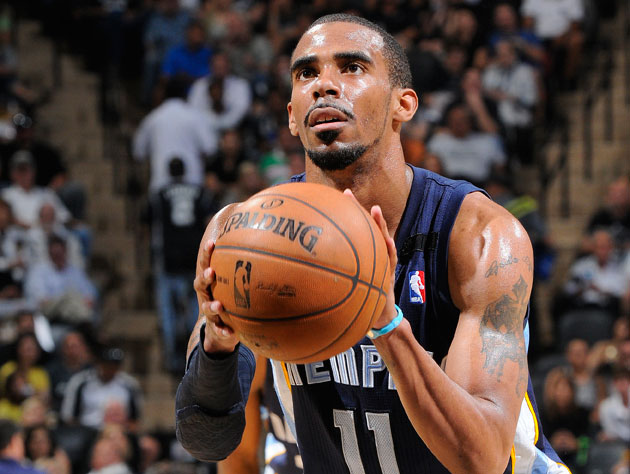
A typical Memphis Grizzlies possession will sometimes feature left-handed point guard Mike Conley bringing the ball up court, spying left-handed forward Tayshaun Prince as he peels off of a screen to set up shop on the “elbow” of the court. Prince will receive a pass from Conley and then attempt to make an entry pass into the post, where left-handed power forward Zach Randolph loves to work from. If that combination works well and the Grizzlies end up blowing out their opponent, left-handed coach Lionel Hollins can empty his bench, and bring young left-handed prospects Troy Wroten and Ed Davis off of the pine to round out the contest.
Lotta lefties, is what we’re saying. Real Kucinich-styled stuff. A legendary amount of lefties, though? Or, most importantly to Memphis, enough to make a difference in the franchise’s first trip to the Western Conference finals?
Kevin Helliker, Chris Herring, and Stu Woo did fantastic work on Tuesday in publishing a piece for the Wall St. Journal that talked up potential advantages to having so many left-handed players on a roster. Here’s one snippet, referencing physician Frank Lawler, who studies these sorts of off-hand things:
In December 2011 Lawler, along with his son, published a paper called "Left-Handedness in Professional Basketball" in the journal Perceptual and Motor Skills. Lawler studied 3,647 professional basketball players who played in at least five games between 1949 and 2009. He found that lefties made up just 5% of the total, roughly half the rate of left-handedness in the general population. In baseball, by contrast, about 20% of all players are southpaws. "There seems to be some kind of bias against left-handed basketball players," said Lawler, chief medical officer of the state of Oklahoma's Employee Group Insurance.
If that finding was surprising, this one was even more so: The lefties who did make it into professional basketball boasted better performance averages when it came to points scored, rebounds and blocks. "It may be that to make it as a left hander you have to be above and beyond the rest," Lawler said.
The Wall St. Journal crew dug in from there, informing us that the Grizzlies are second only to the 1967-68 New York Knicks (featuring Dick Barnett, Willis Reed, and Phil Jackson amongst its notable lefties; in more ways than one, in Jackson’s case) in terms of the percentage of points scored by left-handers in the postseason. The crew also referenced the long-held and spot-on belief that left-handed defenders have an advantage over their right-handed counterparts defensively, because the defender’s stronger arm is matched up with the typical shooting arm of the player trying to score.
None of this helped the Grizzlies in Game 1, the team was completely incapable of establishing its low post attack, and San Antonio’s spacing and movement made that left-to-right arm closeout a moot point as the Grizzlies failed to close out on shooters. The Spurs, using right and left-brain thinking, seemed far more prepared to take down the Grizzlies on both sides of the floor, and though many picked the Grizzlies to win the series, Memphis is facing a formidable task if it continues to whiff on establishing its low post game, or find Spurs scorers in the corners.
This significant hurdle shouldn’t take away from what is a pretty cool quirk, though, one we haven’t seen since a left-leaning Indiana Pacers team made the NBA Finals back in 2000. The Grizzlies have become quite a few fans’ second-favorite team over the last few years for various reasons, and now it appears as if the Ned Flanders’ of the world have found a team of their own.
No comments:
Post a Comment